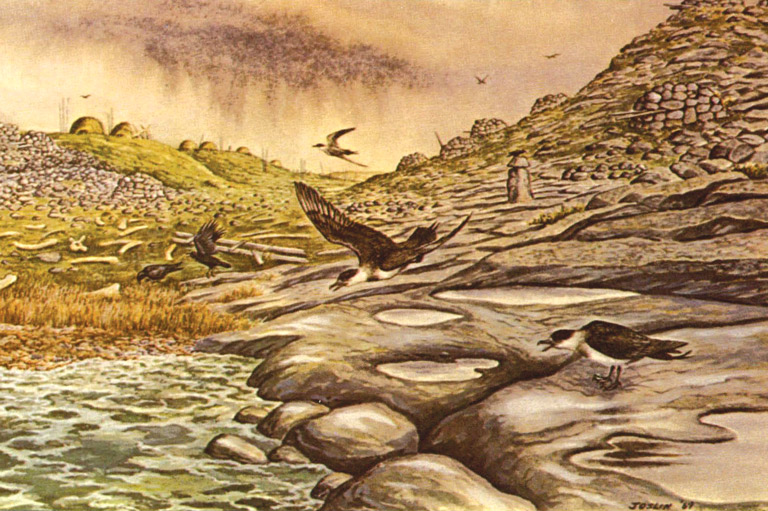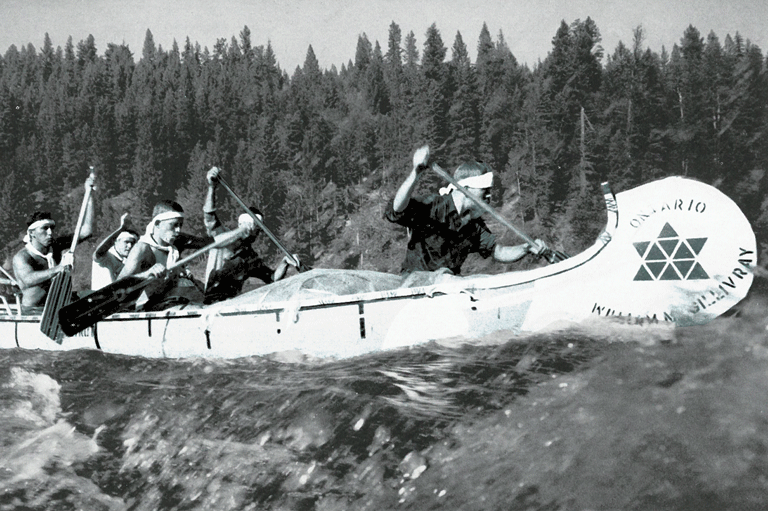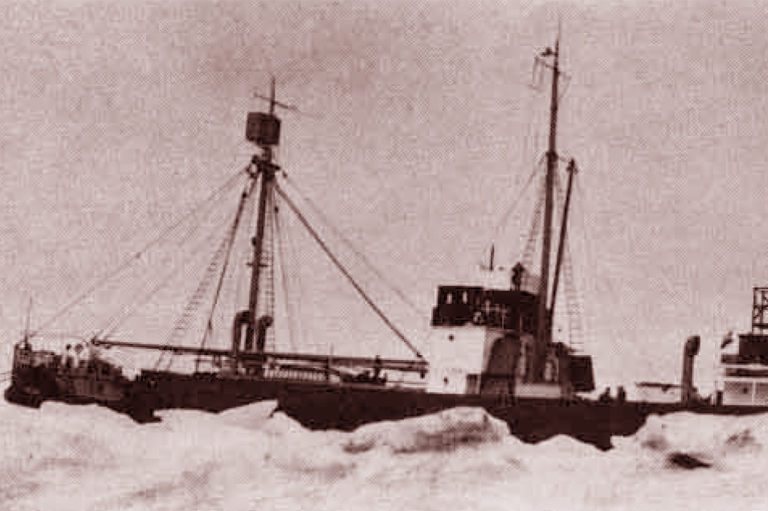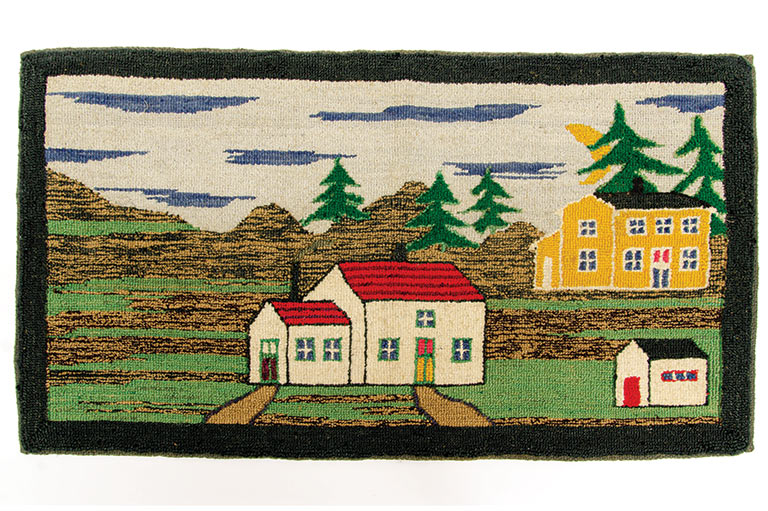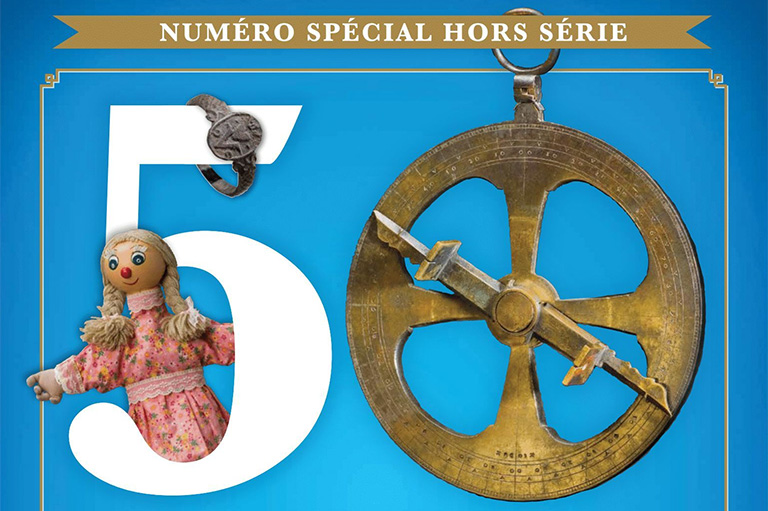Living on the Edges
-
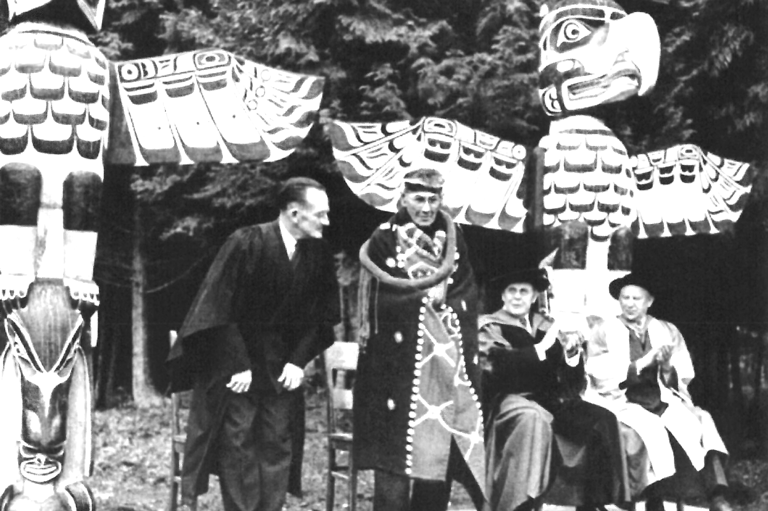 Carver Mungo Martin (standing centre) prepares to speak at the opening of a reconstructed Kwakiutl village at the University of British Columbia.Canada's History Society
Carver Mungo Martin (standing centre) prepares to speak at the opening of a reconstructed Kwakiutl village at the University of British Columbia.Canada's History Society -
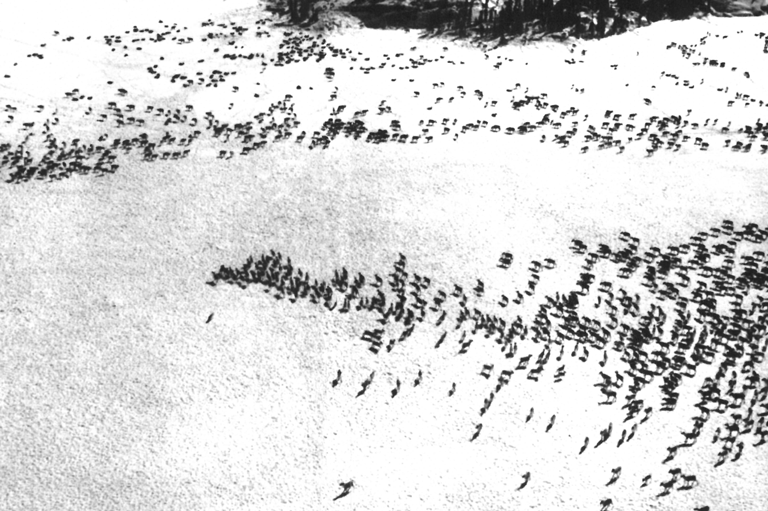 A.W.F. Banfield's aerial photo shows hundreds of caribou on their spring trek as a wolf, lower left, changes towards a cluster of animals.Canada's History Society
A.W.F. Banfield's aerial photo shows hundreds of caribou on their spring trek as a wolf, lower left, changes towards a cluster of animals.Canada's History Society -
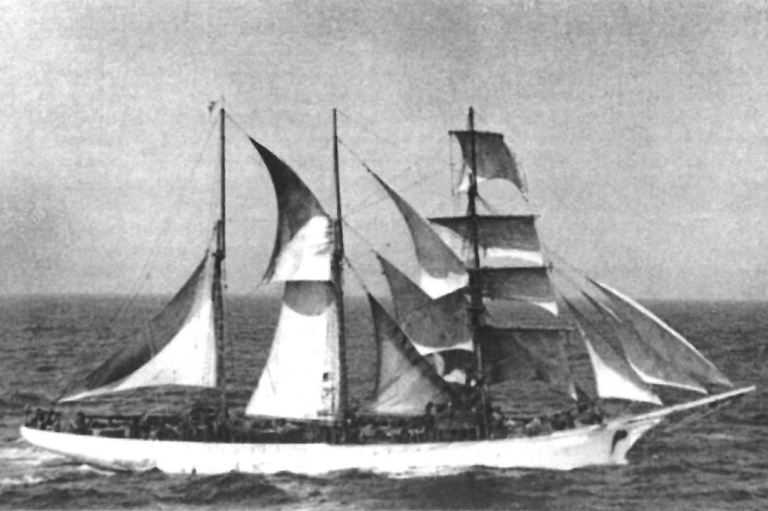 Portugese barquentine the Gazela fished the banks off Newfoundland.Canada's History Society
Portugese barquentine the Gazela fished the banks off Newfoundland.Canada's History Society
The March 1952 issue of The Beaver includes a variety of stories and images of life in Canada’s North, among Indigenous communities, and as recorded over the preceding centuries. Ted Tadda’s cover photo of a northern trapper is followed by Audrey Hawthorn’s feature article “Totem Pole Carver,” about Kwakiutl artist Mungo Martin.
Martin, also known as Hanagalasu, was a much-in-demand carver and painter of “masks, house fronts, storage boxes, ladles, cradles, totem poles, and special effects for the winter dances” on the West Coast — until the potlatch ban and social change eliminated the need for his services. He became a commercial fisher but was later hired by the University of British Columbia to supervise the repair of decaying totem poles for the partial reconstruction of a traditional village that opened on university grounds in 1951.
The article “Bankers of Portugal” — compiled from texts by “celebrated sea-writer” Alan Villiers — tells of the fleet of Portuguese schooners that still arrived each spring in St. John’s harbour to fish the banks off Newfoundland, as their forerunners had done for some 450 years. Photos show some of the sleek vessels and their crews.
In the same issue, an aerial photo by A.W.F. Banfield shows hundreds of caribou making their spring trek over still-frozen waterways toward the Arctic tundra. Wolf packs follow the herd, and at least one wolf can be seen charging toward a cluster of about forty animals “straining to outdistance the wolf.”
Janet Caruthers’ article “Land of the Ojibway” offers impressions of the Indigenous people of the Lake of the Woods area on the Manitoba-Ontario border. She writes of “tiny villages tucked in sheltering bays and on wooded points” and notes a chief who in 1873 said, “we have a rich country” that “belongs to us.”
Themes associated with this article
Advertisement
You might also like...

Canada’s History Archive, featuring The Beaver, is now available for your browsing and searching pleasure!

